- Home
- Prelims
- Mains
- Current Affairs
- Study Materials
- Test Series
Dec 19, 2021
NCP CRITICISES CENTRE’S ‘IN PRINCIPLE’ NOD FOR JAITAPUR NUCLEAR SITE
Recently, Central Government has given approval for setting up of six nuclear power reactors at Jaitapur in Maharashtra.
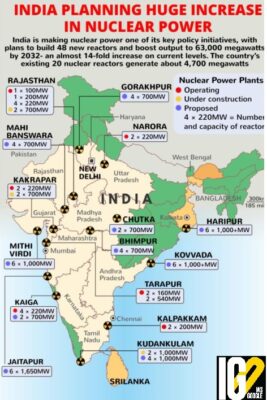
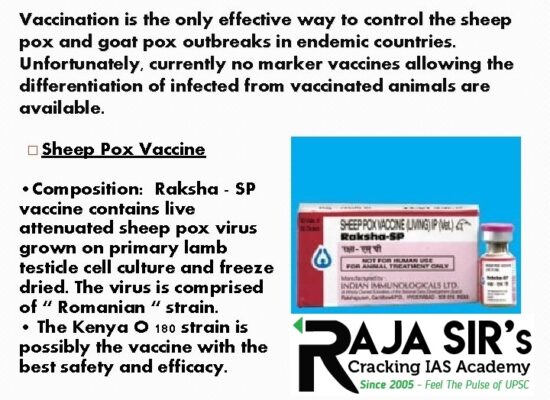 Goat Pox:
Goat Pox:
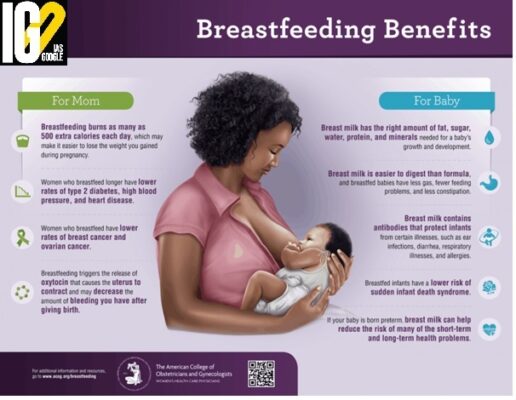 Highlights of Program
Highlights of Program
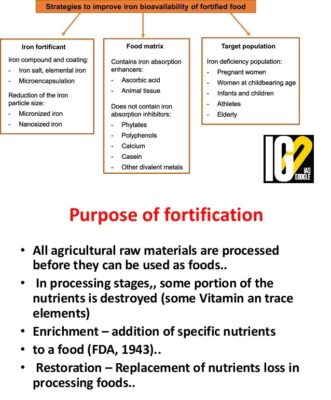 National Nutrition Survey
National Nutrition Survey

 ‘Gharial reintroduction in the Beas Conservation Reserve’ project
‘Gharial reintroduction in the Beas Conservation Reserve’ project
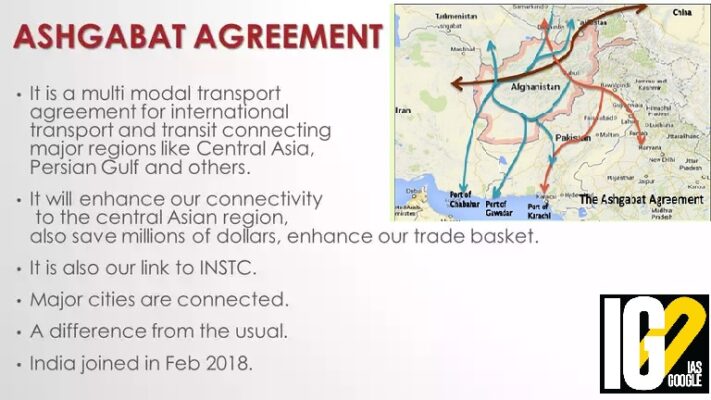 Central Asia Dialogue:
Central Asia Dialogue:
 Missile technology in India:
Missile technology in India:


- The six nuclear power reactors will have a capacity of 1,650 MW each.
- It will be the country’s largest nuclear power generating site with a total capacity of 9,900 MW.
- The net zero targets are expected to be met through a nuclear power.
- The present installed nuclear power capacity in the country is 6,780 MW.
- The share of nuclear power in the total electricity generation in 2020-21 is 3.1%.
- The nuclear power plants have so far generated about 755 billion units of electricity, saving about 650 million Tons of CO2 emission.
- The present nuclear power capacity is expected to be increased to 22,480 MW by 2031.
 Goat Pox:
Goat Pox:
- Sheep and goat pox are contagious viral skin diseases of sheep and goats.
- It occurs in parts of Africa, Asia, the Middle East and India.
- Goats of all ages and breeds are affected but disease is severe in young, old and lactating animals.
- The morbidity of goat pox may be up to 100% and mortality up to 85%.
- High fever, generalized nodules/papules over skin, face, mucus membranes of mouth.
- Conjunctiva, nasal cavities, severe internal lesions.
- Blistering skin lesions.
- Such lesions can lead to substantial economic losses due to decreased milk production, damage to hides and wool, and possible import restrictions
- Sheep and goat pox viruses are spread by respiratory secretions between animals, direct contact or indirectly by fomites.
- The viruses are found in saliva, secretions from the nose or eyes, milk, urine and feces.
- The scabs from skin lesions are contagious and may be present in dust or soil.
- The virus may be spread by insects (vector).
- The prevalence rate of Goat pox varies according to agroclimatic zones and may be up to 48% in certain parts.
- India has 150 million Goat population.
 Highlights of Program
Highlights of Program
- It is an accreditation programme that will enable hospitals to get a “breastfeeding-friendly” tag.
- The certification process involves two stages:
- The first stage includes self-assessment by a hospital.
- Followed by an external assessment by an authorised appraiser who interviews doctors, nurses and patients as well as reviews different practices and training of staff.
- The initiative is only for private hospitals and is based on the Ministry of Health and Family Welfare's MAA programme for government hospitals launched in 2016
- Initiative will help mothers identify “breastfeeding-friendly” hospitals before they give birth.
- Early initiation of breastfeeding continues to be low in the country.
- According to the National Family Health Survey-5 (2019-2021), while there were 88.6% institutional births, only 41.8% of infants were breastfed within the first one hour.
- Maharashtra, Karnataka, Gujarat, Uttar Pradesh, Jharkhand and Chhattisgarh have shown a decline in the proportion of children breastfed within the first hour.
- Provision of mother’s breast milk to infants within one hour of birth ensures that the infant receives the colostrum, or “first milk”, which is rich in protective factors.
- It is a worldwide programme of the World Health Organization and UNICEF, launched in 1992 in India.
- It aims at improving the care of pregnant women, mothers and newborns at health facilities that provide maternity services for protecting, promoting and supporting breastfeeding.
- Comply fully with the International Code of Marketing of Breast-milk Substitutes and relevant World Health Assembly resolutions.
- Have a written infant feeding policy that is routinely communicated to staff and parents.
- Establish ongoing monitoring and data-management systems.
- Ensure that staff have sufficient knowledge, competence and skills to support breastfeeding.
- Breast milk provides ideal nutrition for babies.
- Breast milk contains important antibodies.
- Generates Stronger immune systems.
- Breastfeeding may reduce disease risk.
- Breast milk promotes baby’s healthy weight.
- Breastfeeding may make children smarter.
- Mothers who breastfeed have a lower risk for depression.
- Breastfeeding reduces mother’s disease risk.
- Global Breastfeeding Collective: It is a partnership of prominent international agencies calling on donors, policy makers and civil society to increase investment in breastfeeding worldwide.
- The World Breastfeeding Costing Initiative (WBCi) launched in 2013, attempts to determine the financial investment that is necessary to implement the Global Strategy for Infant and Young Child Feeding (Global Strategy).
- World Breastfeeding Week Campaign 2021.
 National Nutrition Survey
National Nutrition Survey
- National Nutrition Survey evaluated the risk of high blood sugar, high blood lipids and high blood pressure in Indian adolescents.
- Fortification of any one staple (rice, wheat, or salt) will increase serum ferritin, without changing the hemoglobin level. There is a significant risk to health as serum ferritin increases.
- An additional 10 mg of iron/day increased high blood sugar prevalence by 2-14% across States of India, with similar findings for high blood pressure and high lipids.
- Fortification is the addition of key vitamins and minerals like iron, iodine, zinc, Vitamin A & D to staple foods such as rice, milk and salt to improve their nutritional content.
- 70% of people in India do not consume enough micronutrients such as vitamins and minerals.
- 70 % of pre-school children suffer from anemia caused by iron deficiency and 57 percent of preschool children have Vitamin A deficiency.
- Neural Tube Defects (NTDs) are the most common congenital malformation that varies between 0.5-8/1000 births.
- Since the nutrients are added to staple foods that are widely consumed to improve the health of a large section of the population, it is an excellent way to improve the health of a large section of the population, all at once.
- It does not require any changes in food habits and patterns of people.
- It does not alter the characteristics of the food—the taste, the feel, the look.
- It can be implemented quickly as well as show results in improvement of health in a short period of time.
- The method is cost-effective especially if advantage is taken of the existing technology and delivery platforms.
- Fortified foods contain increased amounts of selected micronutrients, they are not a substitute for a good quality diet that supplies adequate amounts of energy, protein, essential fats etc.
- A child will get nutrition only if the lactating mother will be healthy and consumes adequate nutrition.
- After the six months complementary feeding is initiated, wherein infants and children consume small amounts of food.
- Poorest segments of the general population have restricted access to fortified foods in the open markets due to low purchasing power.
- FSSAI (Food Safety and Standards Authority of India) has titled food fortification as a complementary strategy rather than a replacement of balanced, diversified diets to address malnutrition.
- Fortification only bridges the gap between the need and actual consumption of required micronutrients through food.
- Fortified foods as a public health measure should be promoted after analyzing the efficacies and micronutrient status of the population.
- Excess dosages of vitamins and minerals can have harmful effects.

 ‘Gharial reintroduction in the Beas Conservation Reserve’ project
‘Gharial reintroduction in the Beas Conservation Reserve’ project
- It is a programme of the Punjab government.
- Aim- To establish a breeding population of gharial in the rivers of Punjab.
- 40-50% of the released gharials are sighted.
- They are one of the largest members of the crocodilian family.
- It is also known as the gavial or the fish-eating crocodile.
- Gharial derives its name from ghara, an Indian word for pot because of a bulbous knob (narial excrescence) present at the end of their snout.
- It is regarded as most efficient fish catcher.
- Habitat: They prefer deep, clear, fast-flowing waters and steep, sandy banks of Ganges and Brahmaputra.
- Extremely elongated, narrow snouts known as nasal boss.
- Their snouts contain sensory cells that can detect vibrations of prey in the water.
- Uniform sharp teeth, Long, well-muscled neck and Thick, powerful tail
- They are covered with smooth, non-overlapping scales.
- They regulate their body temperature by basking in the sun.
- Hunting
- Land near rivers is used for agriculture and grazing.
- Construction of Dams
- Illegal use of fish nets
- IUCN- Critically Endangered.
- Convention on International Trade in Endangered Species (CITES)- Appendix I
- Wildlife (Protection) Act 1972- Schedule I
- Kukrail Gharial Rehabilitation Centre in Lucknow:
- Established- 1978
- Aim: To protect the endangered gharials of the north Indian rivers.
- National Chambal Sanctuary
- Set up in 1979 as a riverine sanctuary in Madhya Pradesh
- It covers an 185km stretch of the river Beas.
- Legal Status:
- It was declared a conservation reserve by the government of Punjab in 2017.
- The reserve was declared a Ramsar site in 1971.
- Features:
- It is the only host to Indus River Dolphin.
- Other threatened species are endangered masheer, the hog deer, the fishing cat, and the vulnerable smooth-coated otter.
- Environmental Concern: Urban as well as domestic pollution.
- It is one of the eastern tributaries of Indus
- Origin- Rohtang La
- It rises in the Himalayas and flows to Sutlej River of Punjab.
- It is one of the five rivers that give the Punjab (“Five Rivers”) its name.
- Other four rivers are- Chenab, Jhelum, Sutlej and Ravi.
- The origins of the name are often connected with Veda Vyasa, author of Mahabharata.
- Indian Desert Cat is an African wildcat subspecies.
- Habitat: Occurs from the eastern Caspian Sea north to Kazakhstan, into western India, western China, and southern Mongolia.
- In India: inhabits the Thar Desert and is associated with the scrub desert.
- IUCN Red list: Least Concern
- Its fur is light sandy, and small rounded spots cover its upper body.
- The hairs along the spine are usually darker, forming a dark grey, brownish band.
- The forehead has a pattern of four well-developed black bands.
- Established: 1981
- Location: Panna and Chhatarpur districts, Madhya Pradesh.
- The Ken River flows in the vicinity.
- It is situated at a point where the continuity of the Tropical and subtropical dry broadleaf forests belt is broken.
- Beyond this, the Upper Gangetic Plains moist deciduous forests of the great Indo-Gangetic Plain begins.
- This area is the northernmost tip of the natural teak forests and the easternmost tip of the natural 'Kardhai' Anogeissus pendula forests.
- Fauna: Tiger, leopard, chital, chinkara, nilgai, sambhar and sloth bear.
- Flora: Tendu, Achar, Seja Mahua, Saja, Salai, Bel and others.
 Central Asia Dialogue:
Central Asia Dialogue:
- It includes five Central Asian countries including Uzbekistan, Turkmenistan, Kyrgyzstan, Kazakhstan and Tajikistan and India.
- Emphasis was laid on optimum usage of the International North-South Transport Corridor (INSTC) and Ashgabat Agreement on International Transport and Transit Corridor to enhance connectivity between India and the Central Asian countries.
- Push for the inclusion of Chabahar Port within the framework of INSTC.
- Expression of Interest in cooperation on issues related to the development and strengthening of regional connectivity in Central and South Asia.
- Discussion on the current situation in Afghanistan and its impact on the region, following the Taliban's occupancy.
- After the split of the Soviet Union and the formation of the independent republics in Central Asia, India reset its ties with the strategically critical region of central asia.
- India provided financial aid to the region and established diplomatic relations.
- India signed the Strategic Partnership Agreements (SPA) with Kazakhstan, Tajikistan and Uzbekistan to stimulate defence cooperation and deepen trade relations.
- In 2012, India ‘Connect Central Asia’ policy aimed at furthering India’s political, economic, historical and cultural connections with the region.
- Central Asian countries have been keen to have India as a partner as they have sought to diversify their strategic ties.
- They have admitted India into the Ashgabat Agreement, allowing India access to connectivity networks to facilitate trade and commercial interactions with both Central Asia and Eurasia.
- Rising anti-Chinese sentiments within the region and security threats from the Taliban allow India and Central Asia to reimagine their engagement.
- The Ashgabat agreement is a multimodal transport agreement between the governments of Kazakhstan, Uzbekistan, Turkmenistan, Iran, India, Pakistan, and Oman.
- Objective: To enhance connectivity within Eurasian region and synchronize it with other transport corridors within that region including the International North–South Transport Corridor.
- Under the agreement, an international transport and transit corridor facilitating transportation of goods between Central Asia and the Persian Gulf will be constructed
- Ashgabat in Turkmenistan is the depository state for the agreement.
- The agreement was originally signed by Iran, Oman, Qatar, Turkmenistan and Uzbekistan.
- India formally joined in February 2018.
 Missile technology in India:
Missile technology in India:
- Pre-independent India used rockets as part of their warfare technologies.
- Mysore ruler Hyder Ali had iron-cased rockets in his army in the mid-18th century.
- Tipu Sultan, son of Hyder Ali increased this missile technology.
- Post-independence, India did not have any indigenous missile capabilities.
- The government created the Special Weapon Development Team in 1958.
- This was later expanded and called the Defence Research and Development Laboratory (DRDL).
- By 1982, DRDL was working on several missile technologies under the Integrated Guided Missiles Development Programme (IGMDP).
- Defence Research and Developmental Organisation (DRDO)is developing varieties of missile technology for India:
- DRDO is the Research & Developmental wing of Ministry of Defence, Government of India.
- Aim: To empower India with cutting-edge defence technologies and a mission to achieve self-reliance in critical defence technologies and systems

- India is considered among the top few nations when it comes to designing and developing missiles indigenously.
- But India is way behind the US, China and Russia in terms of range.
- Nag
- It is an Indian third-generation, all-weather, fire-and-forget, lock-on after launch, anti-tank guided missile (ATGM).
- It has an operational range of 500 m to 20 km.
- It is called "Prospina" for the land-attack version.
- Stand-off Anti-Tank (SANT) missile
- It has a range over 10 km.
- it has a millimetre wave seeker, which enhances target detection in all weather conditions.
- The short-range SAM system is known as Akash.
- It has the capability to neutralise aerial targets like fighter jets, cruise missiles and air-to-surface missiles as well as ballistic missiles
- It has already been inducted in the Army and the Air Force.
- Medium-Range SAM: Production of MRSAM systems for the Navy is complete.
- Short-Range SAM: For the Navy, the first flight tests have been successfully conducted.
- It is India’s Beyond Visual Range Air-to-Air Missile (BVRAAM) and is under induction.
- It has a range of around 100 km.
- A long-range Astra is also being developed.
- The missile uses solid fuel ramjet technology, which enhances speed, and will have an indigenously-built seeker.
- Rudram is a New Generation Anti-Radiation Missile (NGRAM):
- It has a maximum range of around 200 km.
- The missile mainly targets communication, radar and surveillance systems of the adversary.
- BrahMos:
- It is developed jointly by India and Russia.
- It is a medium-range ramjet supersonic cruise missile that can be launched from submarine, ships, aircraft or land.
- It is notably one of the fastest supersonic cruise missiles in the world.
- It has a range of 300 km to 500 km.
- It will enhance Navy anti-submarine capability with a range of around 400 km.
- It has a range of around 5,000.
- They are long range, nuclear weapons capable, surface to surface ballistic missiles.
- It is India’s only contender for an inter-continental ballistic missile (ICBM).
- It is a short-range surface-to-surface missile with a 350 km range.
- A modified anti-ballistic missile named Prithvi Defence Vehicle Mk 2 was used to hit a low-orbit satellite.
- It put India only behind the US, Russia and China in this capability.
- DRDO successfully tested a Hypersonic Technology Demonstrated Vehicle (HSTDV)in September 2020.
- HSDTV is an unmanned scramjet demonstration aircraft for hypersonic speed flight.
- It is not a weapon but is being developed as a carrier vehicle for hypersonic and long-range cruise missiles.
- India has developed its own cryogenic engine.
- India will try to make a hypersonic cruise missile, using HSTDV.
- Cruise missiles are designed to deliver a large warhead over long distances with high precision.
- India is expected to be able to have a hypersonic weapon with medium- to long-range capabilities.
- The only countries in the world which have hypersonic technology are the United States of America, Russia and China.
- India is at a very advanced stage among the top three or four nations.
- BrahMos was among the fastest in the world when it was developed.
- India is working on AgniVI and Agni VII, which should have a much longer range.
- India’s only nuclear missiles are Prithvi and Agni:
- But tactical nuclear weapons can be fired from some IAF fighter jets or from Army guns, which have a low range, around 50 km.









 Latest News
Latest News
 General Studies
General Studies